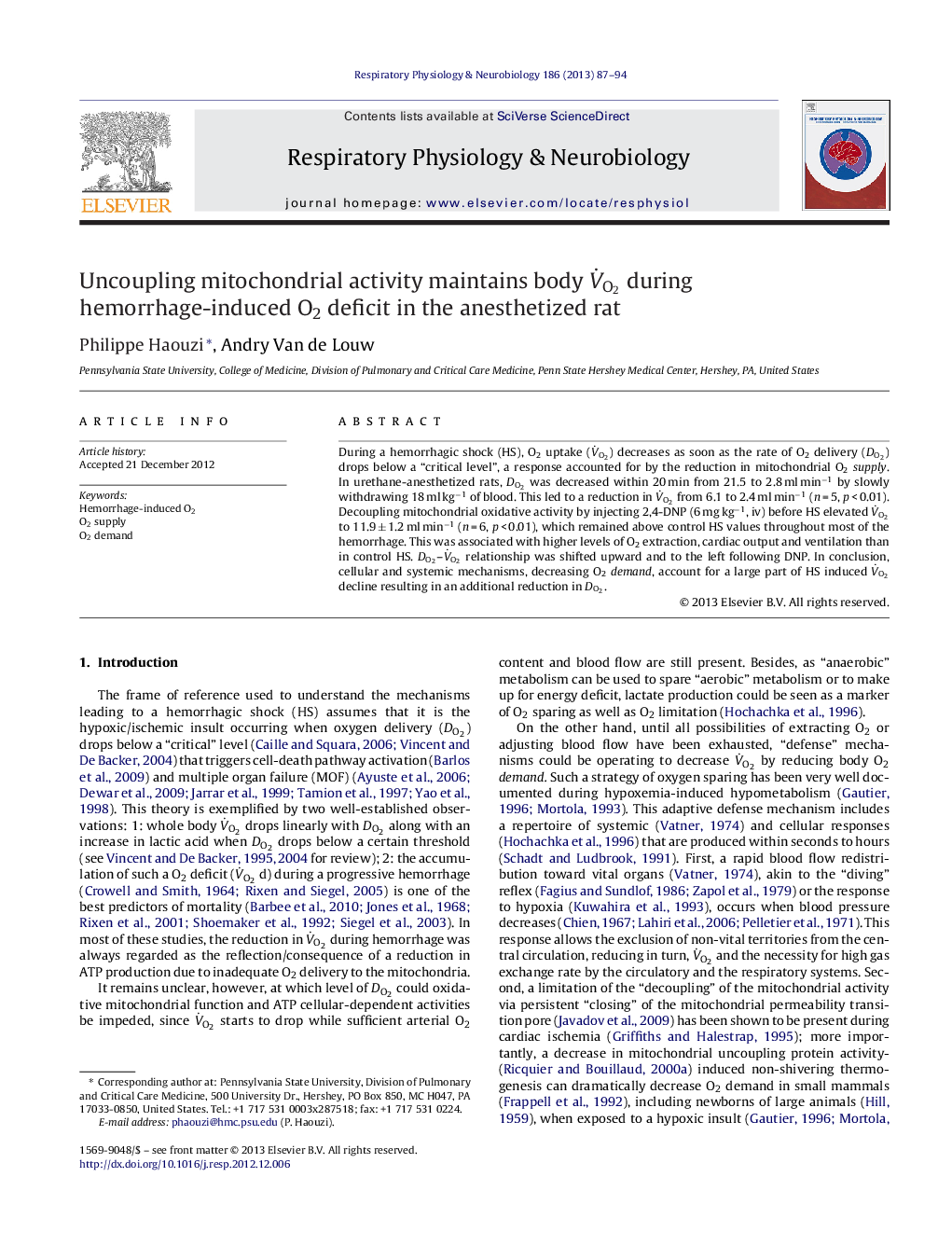| Article ID | Journal | Published Year | Pages | File Type |
|---|---|---|---|---|
| 5926170 | Respiratory Physiology & Neurobiology | 2013 | 8 Pages |
During a hemorrhagic shock (HS), O2 uptake (VËO2) decreases as soon as the rate of O2 delivery (DO2) drops below a “critical level”, a response accounted for by the reduction in mitochondrial O2supply. In urethane-anesthetized rats, DO2 was decreased within 20 min from 21.5 to 2.8 ml minâ1 by slowly withdrawing 18 ml kgâ1 of blood. This led to a reduction in VËO2 from 6.1 to 2.4 ml minâ1 (n = 5, p < 0.01). Decoupling mitochondrial oxidative activity by injecting 2,4-DNP (6 mg kgâ1, iv) before HS elevated VËO2 to 11.9 ± 1.2 ml minâ1 (n = 6, p < 0.01), which remained above control HS values throughout most of the hemorrhage. This was associated with higher levels of O2 extraction, cardiac output and ventilation than in control HS. DO2-VËO2 relationship was shifted upward and to the left following DNP. In conclusion, cellular and systemic mechanisms, decreasing O2demand, account for a large part of HS induced VËO2 decline resulting in an additional reduction in DO2.
⺠Oxygen consumption decreases in a model of acute hemorrhage in the rat when O2 delivery decreases, just like in larger mammal. ⺠Increasing O2 demand during hemorrhage induced O2 deficit increases oxygen consumption and O2 delivery. ⺠Cellular and systemic mechanisms which decreases O2demand during hemorrhage account for a large part of HS induced VËO2 decline.
